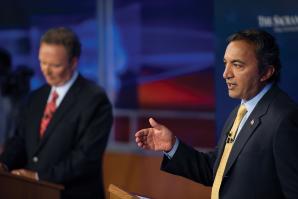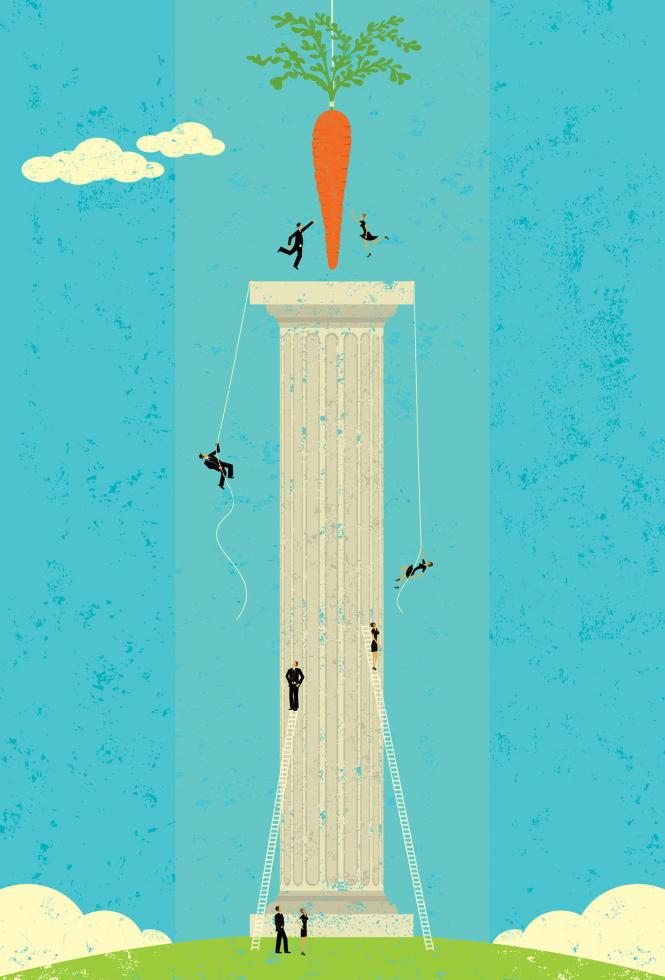The key issue for California’s 2012 election is turnout. The presidential election, a key motivator for voters, might be of little help this year. It’s not shaping up to be a persuasion election, despite the millions being spent on advertising. And because it’s not a battleground state, California could see participation wane.
California has congressional and legislative races in play because of the newly reapportioned districts and the “top two” runoffs, but the most contentious items are the ballot measures, and several are pivotal for the future of the state.
The most critical are the three tax increase measures: Proposition 30, headed by Gov. Jerry Brown; Proposition 38, an alternative income tax increase for schools; and Proposition 39, a corporate tax increase. If any pass, it will show that Californians are open to major tax increases, a big change from recent elections. The other important measure is Proposition 32, the so-called payroll protection initiative that would reduce the flow of money into union political coffers.
None of these initiatives are likely to lure voters on their own, yet Brown needs a huge number of parents with schoolchildren, especially Latinos, to pass his measure.
The results of the June primary show this is a daunting — but not impossible — task. In June, only 31 percent of registered voters — 5.3 million — cast ballots, the lowest turnout for a presidential primary election in California’s history. That compares with 9 million who voted in the February 2008 Presidential primary, which featured close races between Barack Obama and Hillary Clinton on the Democratic side, and John McCain and Mitt Romney for the GOP.
In the fall of that year, however, some 13.7 million people voted in the Obama landslide; 79 percent of registered voters.
So the key voting bloc this year is that between the 13.7 million who voted in November 2008 and the 5.3 million voters who came out this June.
But numbers aren’t Brown’s only battle. The June turnout saw regular voters who can always be counted upon to cast ballots. But they are generally whiter, older, affluent and less open to tax increases than the overall electorate. They defeated a tobacco tax increase that day thought likely to pass. Brown’s campaign has to also overcome conservative homeowners leery of tax increases.
In other words, Brown needs the June primary voters plus the sometime-voters — those who turn out only for the big elections. He needs the voters with children in school and those who depend on government for their livelihood.
But the response of sometime-voters may be just to stay home. The lack of influence California has in the presidential campaign combined with a dull-as-dishwater U.S. Senate race means there’s not much to inspire sometime-voters, who make up a large part of the Democratic base.
That’s why the real campaign in California this year is the ground campaign that will be conducted for Brown’s tax measure and against Prop. 32 by the California Labor Federation and the teachers unions. Their job will be to motivate currently disinterested and alienated members of the Democratic base.
Whether they succeed or not will determine the fate of the tax initiative and the direction of California for the next few years.
Recommended For You

GOP on Deck
Can the Republican contenders overcome Brown in 2014?
With just over a year until the midterm elections, California’s next gubernatorial race is starting to take shape.

Is Sacramento Permanently Democratic?
Voter trends with lasting effects
The 2012 election may have spelled the end for a 30-year boomlet of Republican legislative and congressional representation in Sacramento.



